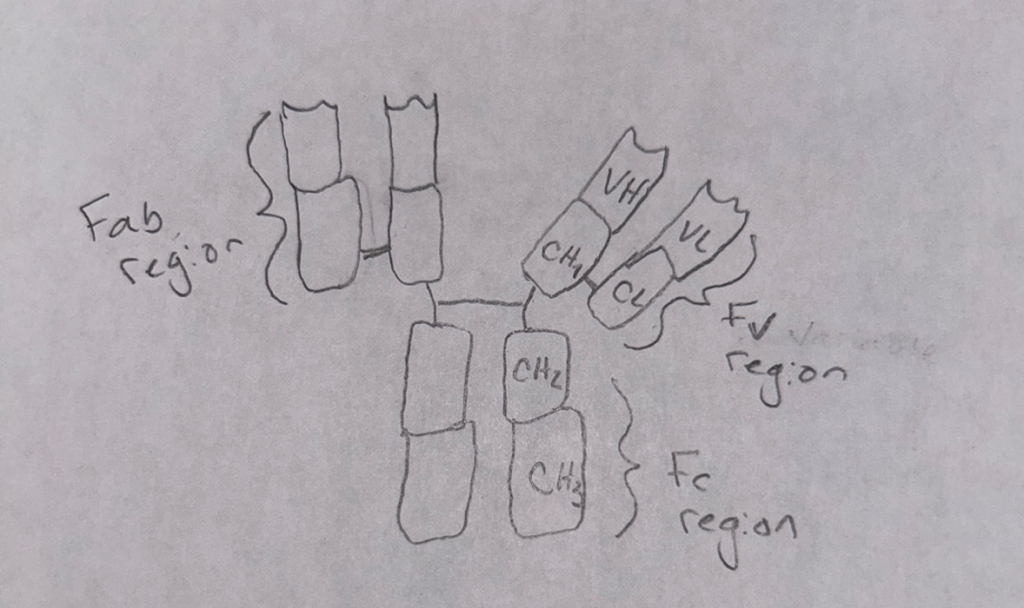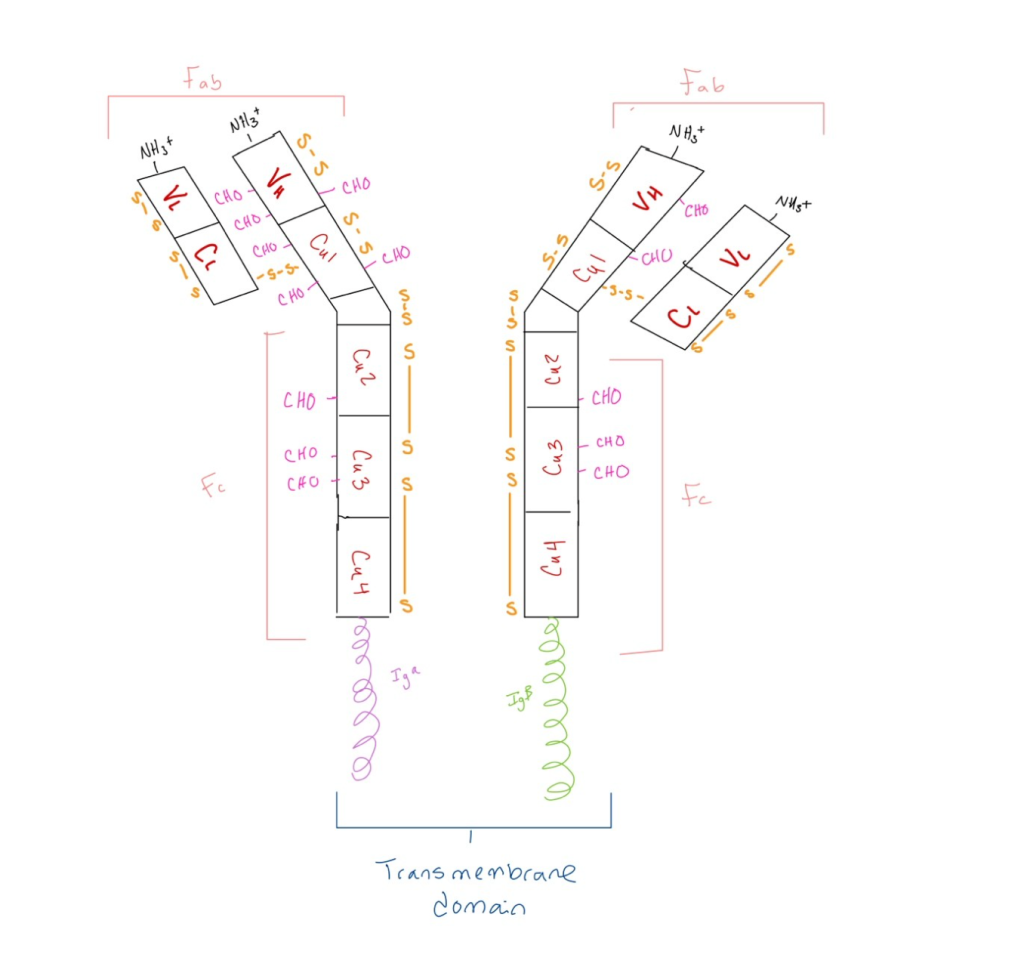One important concept I learned in my immunology course that helped me make a connection to my specific interest in cytology was the role of cell signaling in immune responses. In immunology, I studied how immune cells, such as T-cells and B-cells, communicate to coordinate the body’s defense against pathogens. Understanding how immune cells rely on signaling molecules to activate or suppress immune responses helped me see the parallels between immune system regulation and cellular homeostasis. It also highlighted the complexity of cellular communication, which is crucial for both immune function and normal cellular behavior. Learning these concepts allowed me to better understand how dysfunctions in cell signaling can lead to diseases, such as autoimmune disorders or cancer. This connection deepened my understanding of immunology and strengthened my ability to approach biological problems from a more integrated perspective.
Immunology
-mab Drug Assignment
Daratumumab is a monoclonal antibody that treats myeloma by targeting the CD38 protein on myeloma cells (International Myeloma Foundation, 2024). Myeloma is a form of cancer of the plasma cells (American Society of Hematology, 2024). Plasma cells are a type of white blood cell that help the body fight infections. Myeloma cells prevent the normal production of antibodies, overall weakening the immune system. Myeloma cells also release substances that break down the bones (American Society of Hematology, 2024). Myeloma cells originate in the bone marrow and travel through the bloodstream, accumulating in bones throughout the body. Common sites of accumulation include the spine, skull, ribcage, and pelvis. Myeloma in the bone marrow causes a number of complications such as anemia (low red blood cell count), neutropenia (low white blood cell count), and thrombocytopenia (low platelet count) (International Myeloma Foundation, 2024). Kidney disease is complication that comes about in around 50% of patients with active myeloma. This is because of the toxicity of the monoclonal proteins produces by myeloma cells (International Myeloma Foundation, 2024). Since these myeloma cells affect multiple areas of bone marrow, the disease is often called multiple myeloma. In multiple myeloma, the plasma cells are effectively transformed into malignant cancerous cells which then produce an abnormal antibody called M protein (Multiple Myeloma Research Foundation, 2024). An abundance of M protein is a defining characteristic of myeloma. Multiple myeloma is triggered by specific genetic mutations which can be different from person to person. However, myeloma is not considered to be hereditary, these mutations can occur randomly as people grow older (Multiple Myeloma Research Foundation, 2024).
Daratumumab is an IgG antibody.

Researchers found that daratumumab has an effect on the immune system. Studies showed that daratumumab helps boost the immune response by eliminating certain immune cells that suppress the body’s ability to fight tumors (Plesner & Krejcik, 2018). These cells, which express a protein called CD38, belong to the T cell, B cell, and monocyte–macrophage systems. By removing these immunosuppressive cells, daratumumab allows cytotoxic T cells to grow and work better, which is linked to better survival rates in patients, even if their M-protein levels don’t drop significantly. Additionally, daratumumab seems to improve the activity of these T cells by blocking the CD38 protein’s ability to produce immunosuppressive molecules like adenosine, which weakens the immune response (Plesner & Krejcik, 2018). This boost in T cell function helps control the disease more effectively. CD38 can be found on myeloma cells, cells around them, or even in tiny vesicles released by myeloma cells, which can contribute to treatment failure by reducing the drug’s effectiveness. It’s also been suggested that myeloma cells with low levels of CD38 after starting daratumumab treatment might not respond well (Plesner & Krejcik, 2018). To address this, researchers are testing ways to increase CD38 levels on these cells. In a model of non-small cell lung cancer, research has shown that CD38 helps cancer cells grow and survive. This may be the case for myeloma, where high levels of CD38 could help myeloma cells live longer (Plesner & Krejcik, 2018). On the other hand, when treatment with daratumumab lowers CD38 levels, it might make the myeloma cells more sensitive to other anti-myeloma treatments.
References
Myeloma cancer questions FAQ | International Myeloma Foundation. International Myeloma Foundation. (2024). https://www.myeloma.org/myeloma-cancer-questions
Myeloma. American Society of Hematology. (2024). https://www.hematology.org/education/patients/blood-cancers/myeloma#:~:text=Myeloma%20is%20cancer%20of%20the,weakened%20and%20susceptible%20to%20infection.
Plesner, T., & Krejcik, J. (2018). Daratumumab for the Treatment of Multiple Myeloma. Frontiers in immunology, 9, 1228. https://doi.org/10.3389/fimmu.2018.01228
What is multiple myeloma? symptoms, causes, & prognosis. Multiple Myeloma Research Foundation. (2024, May 29). https://themmrf.org/multiple-myeloma/
